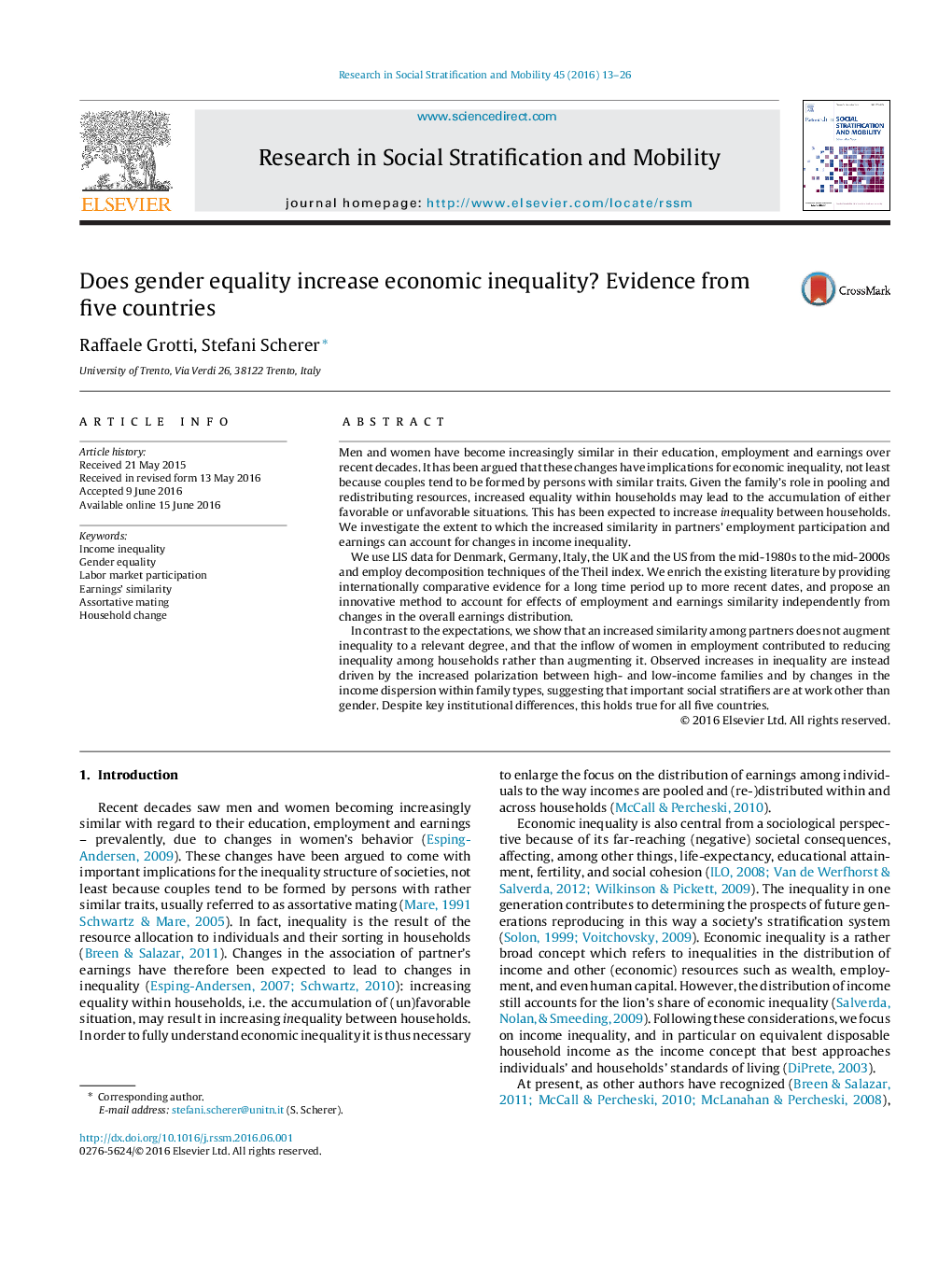| کد مقاله | کد نشریه | سال انتشار | مقاله انگلیسی | نسخه تمام متن |
|---|---|---|---|---|
| 999510 | 1481566 | 2016 | 14 صفحه PDF | دانلود رایگان |
• Increased similarity in employment behavior and earnings of men and women has been argued to increase economic inequality between households.
• The article provides internationally comparative evidence for the last two decades for five countries.
• We propose a novel method to study employment and earnings similarity separately, and independently from the overall earnings distribution.
• We show that increased similarities among partners does not augment economic inequality to a relevant degree in none of the countries.
• In most cases, the increase in dual-earner households, taken alone, would have led to lower levels of inequality than were observed.
Men and women have become increasingly similar in their education, employment and earnings over recent decades. It has been argued that these changes have implications for economic inequality, not least because couples tend to be formed by persons with similar traits. Given the family’s role in pooling and redistributing resources, increased equality within households may lead to the accumulation of either favorable or unfavorable situations. This has been expected to increase inequality between households. We investigate the extent to which the increased similarity in partners’ employment participation and earnings can account for changes in income inequality.We use LIS data for Denmark, Germany, Italy, the UK and the US from the mid-1980s to the mid-2000s and employ decomposition techniques of the Theil index. We enrich the existing literature by providing internationally comparative evidence for a long time period up to more recent dates, and propose an innovative method to account for effects of employment and earnings similarity independently from changes in the overall earnings distribution.In contrast to the expectations, we show that an increased similarity among partners does not augment inequality to a relevant degree, and that the inflow of women in employment contributed to reducing inequality among households rather than augmenting it. Observed increases in inequality are instead driven by the increased polarization between high- and low-income families and by changes in the income dispersion within family types, suggesting that important social stratifiers are at work other than gender. Despite key institutional differences, this holds true for all five countries.
Journal: Research in Social Stratification and Mobility - Volume 45, September 2016, Pages 13–26
